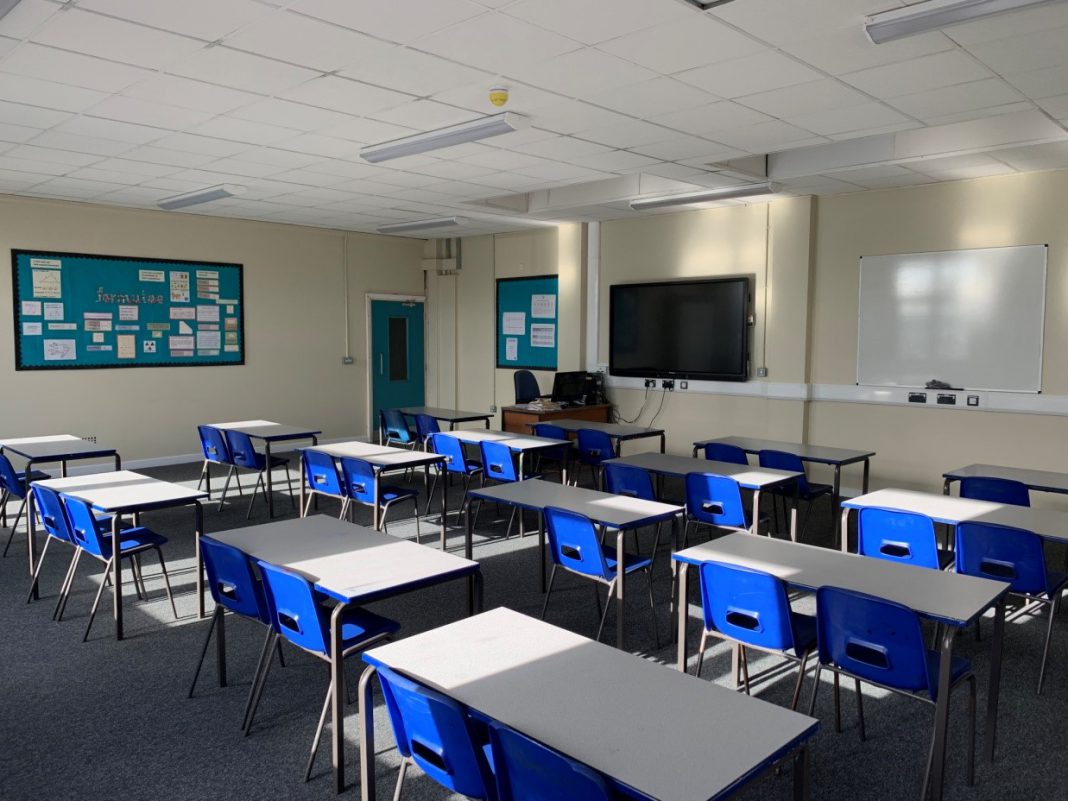It is well known that Rye College has had its problems. Transferring to Academy status in 2012 seemed a good idea at the time, however over the next four or five years, the difficulties facing management began to tell.
A reduction in government funding, staff shortages, a high turnover of head teachers, crumbling buildings and teachers struggling with inadequate resources finally resulted in an ultimatum (closely followed by a damning Ofsted report) from the Department for Education (DfE) that the Rye Academy Trust (comprising both primary school and the college) should merge with a larger and more financially secure organisation.
The search was not an easy one, but finally negotiations opened with the Aquinas Trust who already had nine schools under their wing – eight primary schools and one secondary.
Although operating some distance away with their schools based mainly in the Bromley area, Aquinas could see the potential in Rye and almost immediately seconded key staff to the College before finally taking over the Rye Academy Trust (now in the process of being wound up) in November 2018.

Changes were immediate and far reaching in both schools. Your reporter had the opportunity of spending a couple of hours recently with Aquinas CEO, Kathy Griffiths and executive head teacher, Barry Blakelock and discussed their programme for the future of both Rye schools.
Apart from a need to dramatically improve educational standards there was also an urgent need to improve the buildings and infrastructure and it is this area that we are going to look at this week, with a further article on the educational changes and aspirations next week.
From the outside a certain amount of scaffolding can be seen while remedial works on the upper levels and areas of roofing are carried out. But it is internally that the big changes are being made thanks to funding from the DfE, provided as a consequence of the Aquinas takeover.

Immediately on entering the main building one is aware of the smell of paint. But this is not just a quick redecoration job. CEO, Kathy Griffith admitted that she was appalled at the conditions that the students were expected to study in when she first visited and which would not have been tolerated in the Trust’s other schools. It was determined that a complete renovation job, from the ground up had to be undertaken.
Much of the wiring (suspected as the cause of a fire not so long ago) has been replaced, the plumbing too has been renewed along with all the school washrooms and toilets.
Nor have the classrooms escaped. Where there was in some, old, dirty and peeling paint, there are now clean floors with freshly repaired and painted walls, new desks in many places and improved aids for the teachers.

The canteen, too, has been refurbished and the library has been extended in its scope and moved to dedicated premises in what used to be the Studio School. The primary school library, too, has been expanded and had considerable sums spent on it. The school hall, aka the Milligan Theatre has had the curtains on the upper windows replaced with translucent blinds, the stage renovated and repainted, walls repainted and, most impressive of all, the splendid parquet flooring sanded and polished back to its original colour – all resulting in transforming a rather dowdy and slightly run-down room, into a hall fit for the rest of the school.
There is still much work to be completed – the refurbishment of the science laboratories is an example and other areas are yet to be completed.

Some external changes will be evident in due course, as well. One of these is a new perimeter fence to the front of the college and another will be a second gate on the footpath to the rear of the school – this one at the Leisure Centre end of the path to complement the one already in place at the Tillingham end. Head Teacher Barry Blakelock commented that he realised that this had not been a popular move with some local residents who regularly used the path and it had not been closed without careful thought. But security of both premises and students was his first priority and with the playing fields on the other side of the path, it was just not practical or satisfactory to have a public footpath running through what is, geographically, the centre of the school grounds.
Many readers will also be aware that a planning application has recently been submitted for a large multi-use games area (MUGA) on the playing field. This, Kathy Griffiths explained, was currently an aspiration, as the money had yet to be raised for it. Aware of objections that have already been made, both she and Barry Blakelock were at pains to point out that they would wish to provide the least possible inconvenience to residents in the area and would want to talk to them to ensure this. They feel strongly that the two schools should be seen as very much part of Rye and something the town can embrace and be proud of, rather than be a separate entity within it.
Refurbishment of the infrastructure is all very well, but what of the students and that Ofsted report? Needless to say, big changes are being made here too, but we will be looking at that, next week.
Image Credits: Aquinas Trust .




Very encouraging to learn of our school moving forward. There is a good opportunity to hear more 1st hand at the Parents Forum this coming Tuesday evening.